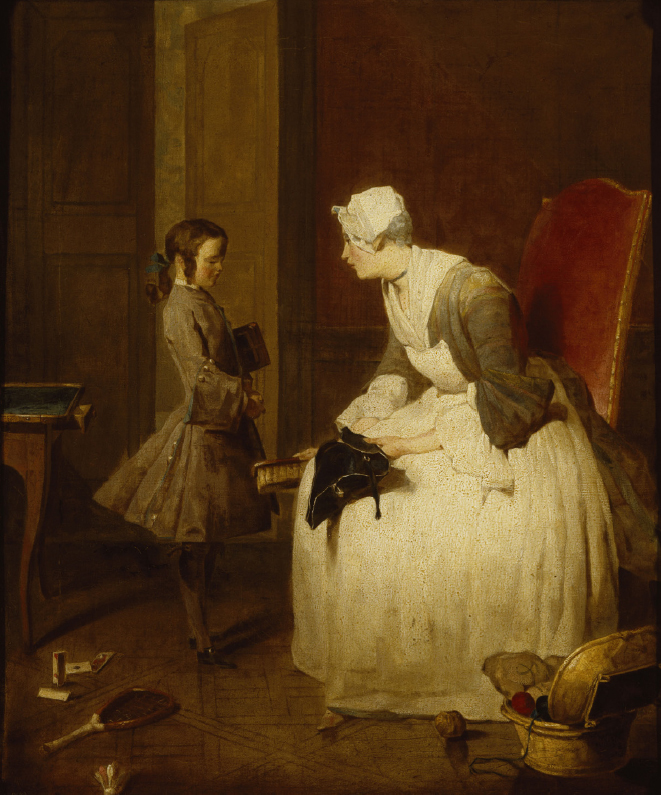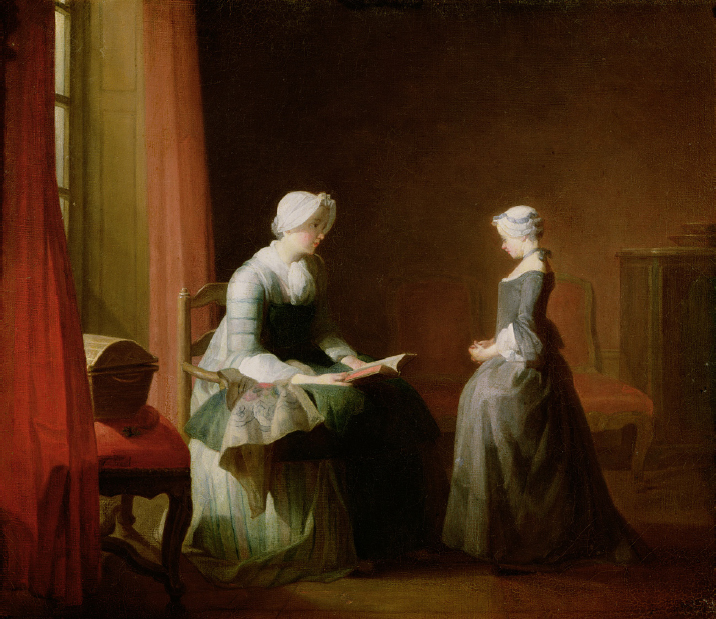DOCUMENT 18.2: Jean-Baptiste-Siméon: Chardin Education
DOCUMENT 18.2
Jean-Baptiste-Siméon Chardin Education: The Governess, 1739, and The Good Education, 1753
For the children of eighteenth-century elites, much early education took place in the home and was conducted by hired help. Tutors, governesses, and music instructors all played a part in preparing elite children for their future lives, often taking a larger, more hands-on role in their charges’ upbringing than the children’s own parents. Thus it should not surprise us that Chardin’s paintings of students and their teachers often focused on deep, emotional bonds. In The Governess, a boy receives last-minute words of instruction or advice from his governess as he prepares to leave the house. The intensity of the governess’s gaze and the boy’s downward glance, perhaps conveying an effort to maintain emotional control, suggest that this parting may be permanent. The two figures in The Good Education are shown in similar poses. In this case, the teacher stares intently at her pupil, offering silent encouragement, while her student, head bowed in concentration, recites her lessons. As you examine the two paintings, pay particular attention to the interior details Chardin included in each.
The Governess, 1739

The Good Education, 1753

QUESTIONS TO CONSIDER
Question
What should we make of the toys on the floor in The Governess? What about the light streaming through the window in The Good Education?
Question
Compare these two paintings with Chardin’s paintings of children at play (The House of Cards and Portrait of Augustus Gabriel Godefroy). How do the paintings of childhood education both complement and complicate the paintings of childhood play?